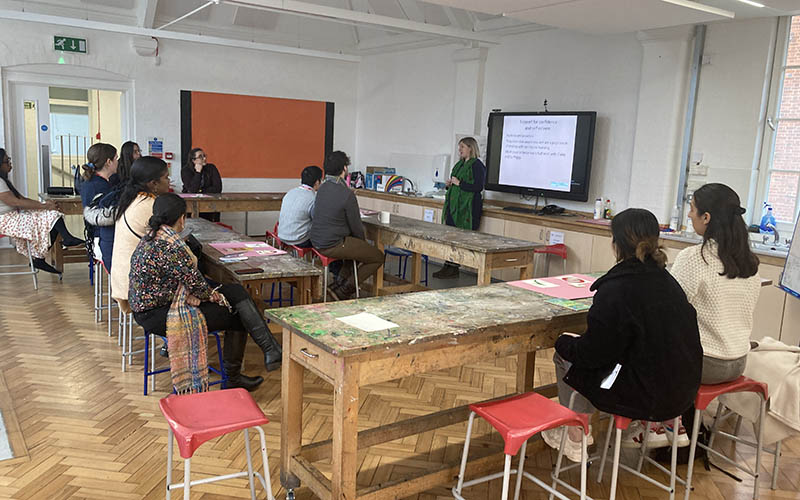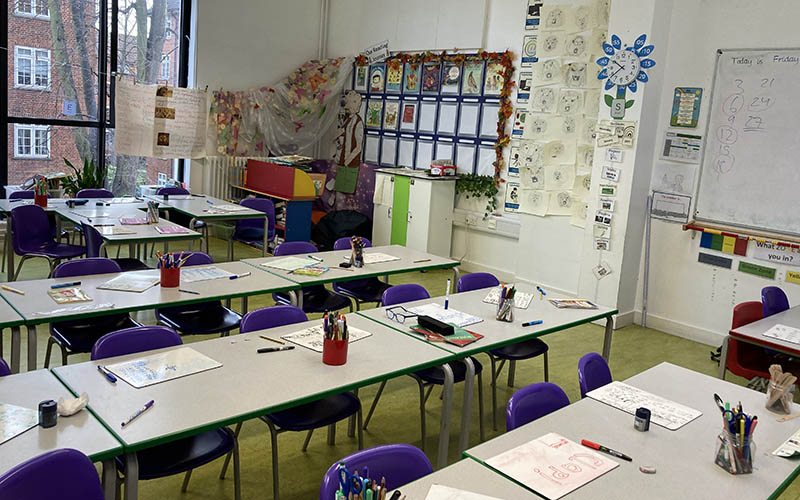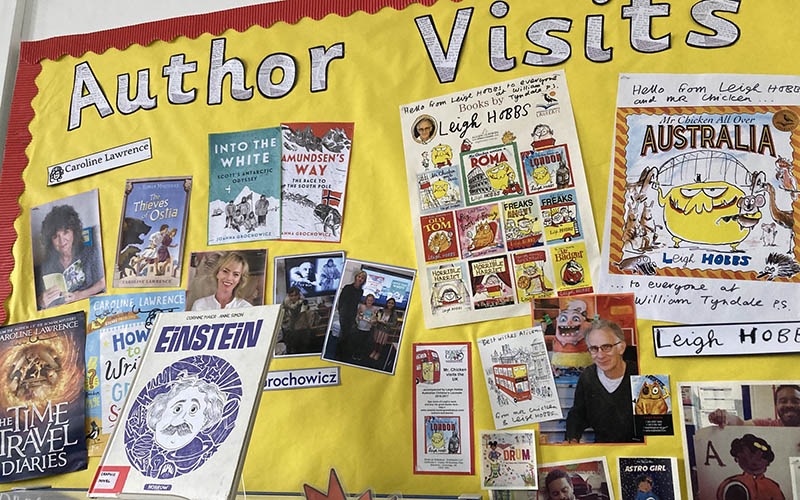My visit to William Tyndale Primary School: A dyslexia-friendly school
By IOE Blog Editor, on 28 April 2023

(Image source: Elisabeth Herbert).
28 April 2023
By Eleni Kanta, Special and Inclusive Education (Specific Learning Difficulties) MA
The Special and Inclusive Education (Specific Learning Difficulties) MA at UCL is a must for all teachers who are keen to have a more in-depth knowledge of specific learning difficulties with a focus on Dyslexia. Dyslexia is a phenomenon teachers around the world come across often.
The sessions are delivered by specialists in the field of literacy difficulties, which makes the course rich in knowledge and gives an extra point-of-view. In addition to lectures, students attending this programme have the opportunity to attend a school visit at William Tyndale Primary School in Islington.
This was organised by UCL and our programme leader, Associate Professor Elisabeth Herbert. As this MA course encourages both international and home students to apply, the school visit was something particularly beneficial for international students, who had the chance to see how a “dyslexia-friendly school” works in the national context. We were provided with an opportunity to gain insight into how British schools work. At the same time, we were able to visit a school with an outstanding profile of supporting dyslexia and accredited by the British Dyslexia Association as dyslexia-friendly.

(Image source: Elisabeth Herbert).
The school visit included a range of activities and support sessions, which were carried out and organised by the Deputy Head Teacher, Claire Oliver. We arrived there at the beginning of the day and had the chance to observe “early morning booster” sessions. Here, children in need of additional support have the opportunity to attend classes before the start of the day so they can get support with identified areas of difficulty from teachers and teaching assistants trained in the field.
Later, we attended a “daily supported reading” staff meeting aimed at teachers supporting various age groups across primary, from Year 1 to Year 6. Important to mention here is that some of the teachers who were involved in these meetings had completed the same MA course at UCL. It was incredible and very encouraging to see them implementing some of the interventions we’re being taught about at the moment.
Following on, so we could have an insight of what lessons looked like at William Tyndale Primary School, we had the chance to attend and observe some class lessons. A course-mate of mine and I attended a short lesson observation of Year 3 and 4. We were amazed at the participation and engagement of the children. Both lessons were very pleasant to observe since the teachers were actively engaging all children in the activities with support from TAs or specialists, which helped the lesson run smoothly.

(Image source: Elisabeth Herbert).
Part of our visit involved a school building tour led by pupils on the SEND (special educational needs and disabilities) register. It was amazing to see how independent they all were, knowing all the classrooms and corridors of the school and being able to give us a tour. The children were all really keen and confident to start conversations with us and inform us about what activities were running in the school.
We also had the chance to talk with the Assistant Head of the school about dyslexia-friendly school practice and status. Claire Oliver, herself an alumna of the MA course, was able to describe useful recourses that would support the school to achieve an Ofsted “Outstanding” report in all areas. Claire showed us resources, such as useful books and ways to support dyslexic learners and implement activities.

(Image source: Elisabeth Herbert).
We next had the pleasure to meet the school’s “Dyslexia Ambassadors.” It was incredible to see that these ambassadors were primary aged children with a diagnosis of dyslexia. Through this activity, we talked to those pupils and heard their voices and learned how they lead activities in the school and feel confident regardless of their diagnosis. Coming to the end of our visit, we were delighted to meet and have a Q&A with the SENDCos (i.e. the Special Educational Needs Co-ordinators) of the school. They told us the importance of their role in the school and how they support the pupils who are in need.
We absolutely enjoyed to the fullest this school visit by not only being told what a dyslexia-friendly school looks like but also experiencing it first-hand. It was impressive to see how involved all the school staff was, working towards building a dyslexia-friendly school so that pupils feel confident and enjoy being part of this inclusive school.
 Close
Close


